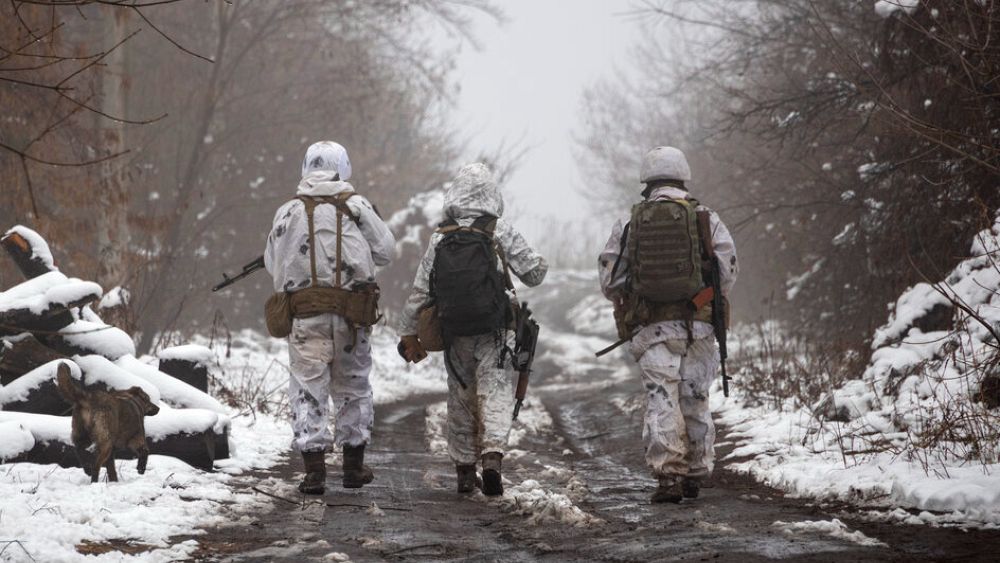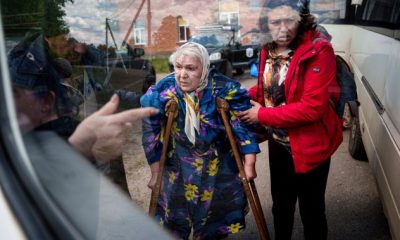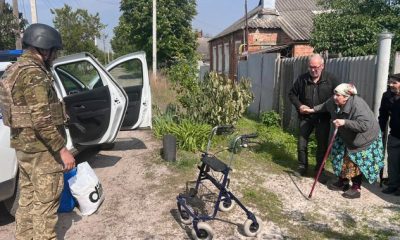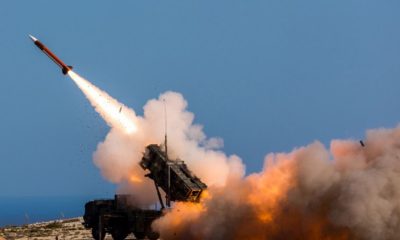Uncategorized
Rats the size of AK-47s and grimy mud: Winter comes to Ukraine war

“Nobody wants to be on the frontline,” one expert told Euronews, highlighting the grizzly impact of bitter weather on soldiers and civilians.
Winter has only just arrived, but it has already brought an array of difficulties to the Ukraine war. Armies on both sides are being affected and Ukrainian civilians too.
“Spare a thought for the Ukrainian defenders in the trenches,” Tyler Kustra, assistant professor of politics and international relations at the University of Nottingham, told Euronews.
More than a million Ukrainian and Russian soldiers are currently fighting in eastern Ukraine, as temperatures plummet and winter weather begins to bite.
But that is the start of their worries.
Citing images of rats “the size of a Kalashnikov assault rifle” shared on social media by troops, Kustra said Russia’s forces “are dealing with a severe rodent infestation as mice and rats seek warmth and food by going into their trenches.
“Given that the Ukrainians are just on the other side of the front line, I worry that Putin isn’t the only vermin that they will have to deal with,” he added.
Various social media posts and reports have emerged in recent weeks purporting to show plagues of rodents inside Russian frontlines, a sign of increasingly unsanitary and degrading wartime conditions for troops on the battlefield.
AFP recently reported that mice were chewing cables of important pieces of equipment in Ukraine’s trenches, like heaters and internet devices, adding yet another problem.
Morale plummets in winter
Fighting in winter, meanwhile, is challenging.
“Lying in trenches when it is minus 10 or 20 can give soldiers hypothermia,” Dr Marina Miron, a post-doctoral researcher at the King’s College War Studies Department told Euronews, adding that a lack of foliage means they cannot hide out in the open.
Extra fuel and proper clothing are needed “just to survive the winter battlefield,” she continued, placing a greater resource burden on each country’s army.
“That said, both sides know how to operate in winter. It’s not anything new,” she added.
Still, bleak weather can affect troops mentally, especially when far from family and friends.
“Nobody wants to be on the front lines, so morale goes down. People want to be somewhere that is nice and warm, rather than outside,” said Miron.
“That’s the problem, you have a human factor here in both the psychological and physical limitations of operating in winter.”
Winter’s grasp also poses challenges for strategists in Kyiv, making it difficult to move forward on the battlefield.
“Muddy ground is bad for military advances,” said politics professor Kustra, with slippery conditions making it difficult to move troops and tanks. “Frozen ground works better.”
Added to these natural issues he cited remarks by Ukrainian General Valery Zaluzhny in TheEconomist that the current technological situation means Ukraine cannot mass forces for an attack.
“They will be spotted by Russian drones and destroyed.”
Ukraine’s counteroffensive, launched in June, could slow down due to difficult winter weather, having not achieved as much as hoped by some.
Advances are still possible, however.
“Even if operations in the winter are troublesome, they’re just different,” Miron told Euronews.
She pointed to the Second World War, which saw significant offensive actions in the winter months.
“We might not see the same kind of swift action [as in the summer in Ukraine]. But that doesn’t necessarily mean that there will be no offensive operations,” Miron explained.
Whether or not one side would benefit more than the other is unclear.
“You cannot say it favours the Ukrainians or the Russians,” said Miron. “It favours the side that is best prepared for such operations and has implemented all the things that should be implemented early on.”
“Now is not the time to judge.”
Western countries last year hastily shipped winter clothing as frozen temperatures then became one of the most feared foes on both sides of the frontline.
“More decisive” factors, such as ammunition shortages or manpower issues, could impair operations on the Ukraine side, Miron warned.
EU states have committed to supplying one million shells to Kyiv by March, though this ambitious objective already seems unattainable.
Winter is affecting civilians too
But it is not only soldiers that suffer from the chill.
“I’m worried about Ukrainian civilians as temperatures dip,” said Kustra.
“Last winter Putin attacked Ukrainian power plants to try to freeze the civilian population. He may well try again this winter. Thwarting his plans and keeping the heat will be a concern for the Ukrainian military.”
Russian strikes hammered Ukraine’s energy infrastructure during the dark depths of winter, plunging the country into darkness for extended periods and denying civilians light and heating.
Its targeted campaign destroyed approximately 61% of Ukraine’s electricity generation capacity, and damaged more than 50% of the country’s energy sector, according to the Atlantic Council, a US think-tank.
Average temperatures in Ukraine range from -4.8 C to 2 C between December and March, with harsh weather conditions like snow and ice frequent.
Dr Jade McGlynn, Research Fellow in War Studies at King’s College London, told Euronews earlier this year, that Moscow was deliberately “terror bombing” Ukraine.
“The ultimate intention is to break the will of the population so that they will at some point give in and accept Russia,” she explained in June, claiming it was personally “directed” by the Russian President.
“Putin believes the West will give up and Ukrainians will just be grateful for an end to the terror.”
Source
Disclaimer: No copyright infringement intended. All rights and credits reserved to respective owner(s).
























